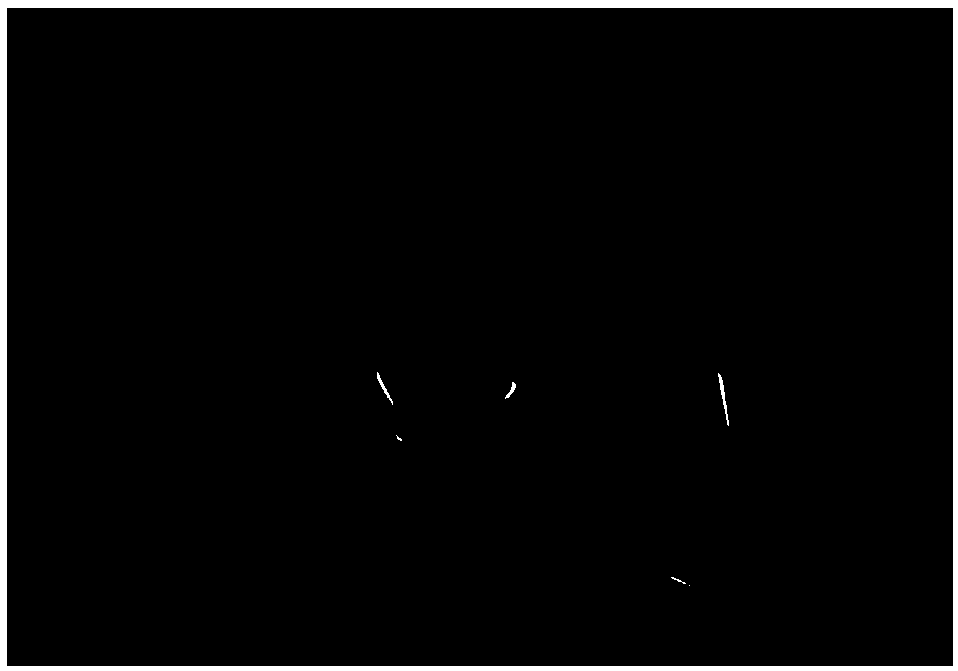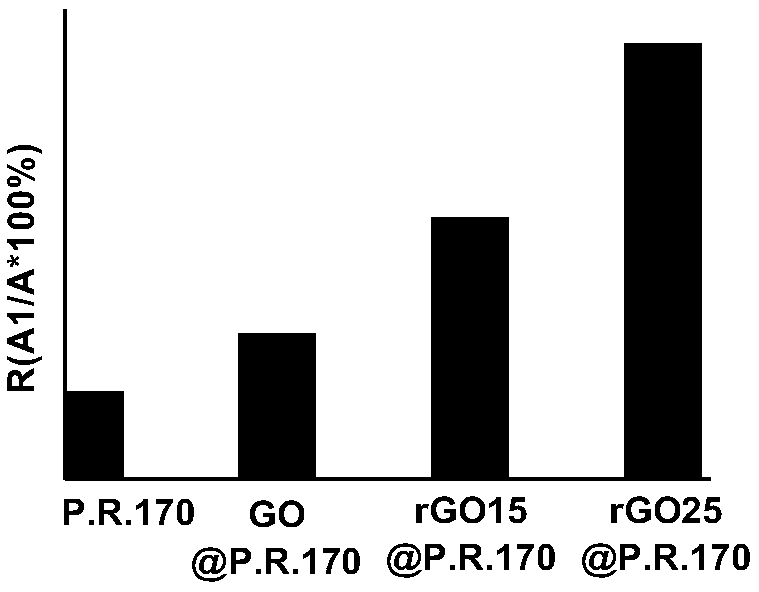Method for coating surface of organic pigment
A technology of organic pigments and surface coating, which is applied in the direction of organic dyes, inks, household appliances, etc., can solve the problems of high cost, monodispersity of organic pigments, etc., achieve good dispersion performance and heat resistance, and have wide application prospects.
- Summary
- Abstract
- Description
- Claims
- Application Information
AI Technical Summary
Problems solved by technology
Method used
Image
Examples
Embodiment 1
[0020] This embodiment specifically includes the following steps:
[0021] Step 1) Graphene oxide (GO) prepared by the chemical oxidation stripping method is formulated into an aqueous solution of 100mL 1mg / mL;
[0022] Step 2) Disperse 10g of organic pigment red P.R.170 into a 100mL beaker, use mechanical stirring to disperse and place four beakers in an ultrasonic device for dispersion;
[0023] Step 3) Under the condition of high-speed stirring, slowly add the solution of step 1) to the solution of step 2). figure 1 It is the electron microscope picture of the product obtained;
[0024] Step 4) Centrifuge the obtained product, separate the precipitate, wash the precipitate three times alternately with deionized water and ethanol, and then place it at 60°C for 12 hours in vacuum to obtain the organic pigment red P.R.170 / GO nanocomposite.
Embodiment 2
[0026] Step 1) the graphene oxide prepared by the chemical oxidation stripping method is formulated into an aqueous solution of 100mL 1mg / mL;
[0027] Step 2) Disperse 10g of organic pigment red P.R.170 into a 100mL beaker, use mechanical stirring to disperse and place four beakers in an ultrasonic device for dispersion;
[0028] Step 3) carrying out hydroxylamine reduction to the graphene oxide aqueous solution, the specific steps are: add 1.4mL ammonia water and 0.2g hydroxylamine hydrochloride successively to the graphene oxide in step 1), and then place it in a constant temperature water bath at 90°C for 30 minutes to obtain chemical Reduced graphene oxide aqueous solution (rGO).
[0029] Step 4) Under the condition of high-speed stirring, slowly add the chemically reduced graphene oxide aqueous solution to the solution in step 2), and after the solution is added dropwise, continue to maintain the high-speed stirring state, and keep the temperature at 40°C;
[0030] Step ...
Embodiment 3
[0032] Step 1) the graphene oxide prepared by the chemical oxidation stripping method is formulated into an aqueous solution of 100mL 1mg / mL;
[0033] Step 2) disperse 10g of azobenzene pigment into four 100mL beakers, use a ball mill for ball milling and disperse and place the four beakers in an ultrasonic device for dispersion;
[0034] Step 3) carrying out hydroxylamine reduction to the graphene oxide aqueous solution, the specific steps are: add 1.4mL ammonia water and 0.2g hydroxylamine hydrochloride successively to the graphene oxide in step 1), and then place it in a constant temperature water bath at 90°C for 30 minutes to obtain chemical Reduced graphene oxide aqueous solution (rGO).
[0035] Step 4) Under the condition of high-speed stirring, slowly add the chemically reduced graphene oxide aqueous solution to the solution in step 2), and after the solution is added dropwise, continue to maintain the high-speed stirring state, and keep the temperature at 40°C;
[00...
PUM
 Login to View More
Login to View More Abstract
Description
Claims
Application Information
 Login to View More
Login to View More - R&D Engineer
- R&D Manager
- IP Professional
- Industry Leading Data Capabilities
- Powerful AI technology
- Patent DNA Extraction
Browse by: Latest US Patents, China's latest patents, Technical Efficacy Thesaurus, Application Domain, Technology Topic, Popular Technical Reports.
© 2024 PatSnap. All rights reserved.Legal|Privacy policy|Modern Slavery Act Transparency Statement|Sitemap|About US| Contact US: help@patsnap.com









